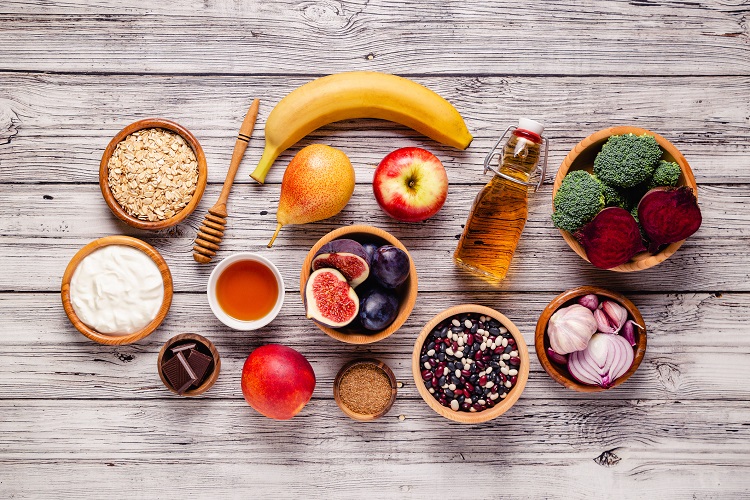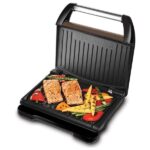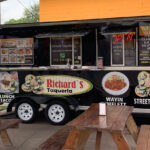
Menu forecasting
Menu forecasting for Food and beverage businesses is a vital component of planning the future of the business. This type of planning involves using past order volumes to determine what will sell during the next few months. For example, a restaurant may note that a certain food item is a popular choice on Valentine’s Day. Using that information to plan the menu for the coming year can help reduce food waste.
Menu planning must also consider current and future consumer trends. This is vital for developing new recipes and menu items. Besides determining consumer tastes and preferences, menu planning also involves factors like availability and quality. A restaurant menu must be able to appeal to a wide range of different types of customers, including those with special dietary needs.
Menu forecasting also involves determining the popularity of each food item. This data is important for adjusting a restaurant’s menu and ensuring profitability. Restaurants should consider popularity indexes as a guideline for determining the popularity of menu items. The popularity index measures the percentage of total restaurant guests who choose a certain item.
With the use of software like FoodPro Forecast Module, companies can create a more accurate forecast based on historical data. By incorporating recent trends and population adjustments, the software can produce a realistic estimate of the number of patrons at a restaurant. With such accurate data, restaurants can optimize their schedule and control labor costs, improving the customer experience.
Menu planning is a complex process and requires the input of the various resources of an establishment. By incorporating these resources, menu planning is more likely to be successful. Furthermore, conditions such as seasonality and availability can affect menus and menu planning.
Yield management
Yield management pricing is a process in which firms make changes to their prices to increase or decrease demand. This helps enterprises determine future demand more accurately and improve sales and production planning. This strategy is most effective for perishable products, such as food and beverages. Moreover, it can help firms respond to the diversity of customer interests by introducing more price points. For example, a firm can reduce the price of its chocolate bar if it is not experiencing high demand.
Revenue is the lifeblood of a Food and beverage operation, and optimizing the revenue generated by that revenue requires accurate data about demand and capacity. Many food and beverage operations don’t do a good job of tracking the number of would-be customers who leave without ordering. Understanding what drives these individuals to walk away from your establishment is essential for optimizing yield.
Using this information, you can calculate the total revenue and yield. If you have ten rooms, set each at $149, and charge the other six at $249, you would earn $1,494 in revenue. This would be a 50% yield. You can do the same thing with the remaining rooms.
The basic formula for yield management involves comparing revenue achieved with the maximum potential. This way, you can monitor your performance and make necessary adjustments. For example, if a hotel has 100 rooms at $150 per night, its maximum revenue is $15,000, while a hotel with 70 rooms at $120 per night only earned $8400. The total yield is therefore 56%. Even small improvements in your yield can lead to a substantial increase in overall revenue.
In the hospitality industry, yield management is important for maximizing profits. A well-developed yield management strategy can balance demand and supply. For example, an in-demand restaurant can charge higher prices during peak seasons. In addition, a hotel can implement variable pricing strategies to encourage advance bookings.
Bar codes
Buy bar codes for food and beverage packaging are used to keep track of products. In the event that a code is unable to be read, the company will face production delays, wasted product, and even chargebacks. Food and beverage manufacturers are facing increasingly complex demands to stay competitive, and they must keep up with constantly evolving industry standards and regulations. To help them better manage their operations, the Foodservice GS1 US Standard provides guidelines on the design and placement of food and beverage barcodes.
Barcodes for Food and beverage manufacturing also help prevent contaminated food. These codes allow manufacturers to track and trace products throughout the entire supply chain. Food and beverage manufacturers must comply with strict regulations at all times, and using barcode technology makes this possible. Additionally, it simplifies processes and product sorting, contributing to improved logistics.
Barcodes have a long history in the Food and beverage industry. The technology was first introduced in the 1970s, and it has become ubiquitous in grocery stores. It helps companies keep track of inventory, reorder products, and make the checkout process faster and easier. There are a number of barcode standards that have become widely adopted. Today, there are only about 20 different symbols used.
Barcodes are widely used in many different industries, and they are a simple and reliable way to keep track of inventory. It saves time and money by reducing the need for manual data entry and cuts down on obsolete inventory. Additionally, barcodes require minimal up-front investment. Compared to other systems, they’re also considerably cheaper.
Cost control
In a Food and beverage service establishment, controlling Food and beverage costs is critical. This involves a series of processes, ranging from purchasing to receiving, production to service, and sales. Product yield is one of the most important metrics in Corporate cost control, as it helps determine how much of an item can be used for preparing a dish, including how much of that portion is edible. Another important factor is waste percentage. Few items are consumed whole, and a large percentage is wasted during the chopping, trimming, and cooking process. Keeping track of this percentage helps you determine how much you can order, and to make the most efficient use of your resources.
Establishing a cost control process for food and beverage will help your restaurant become more financially stable and develop a cost-cutting culture among employees. With this culture, they will be motivated to identify opportunities to cut costs without supervision, thereby boosting their productivity and reducing the overall costs of your operation. Additionally, this will allow you to raise your staff’s salaries and attract better staff members. Cost control management policies also identify and control unnecessary costs in the food and beverage operation.
Food and beverage cost control can help you achieve profitability by ensuring that your menu is priced accurately. This helps you set prices that are competitive, which is essential for operational and financial success. This method will also help you keep track of sales and forecast future costs. This is especially important in the hospitality industry, where food and beverage costs are highly volatile.
Food and beverage costs consist of ingredients, raw materials, and alcoholic beverages. Then, there are the costs of labor, which include all costs incurred by employees. Some businesses also include administrative costs. Additionally, there are manufacturing overhead costs, which include items like knives, pots, and tablecloths.
Customer service
Customer service for food and beverage companies is critical to their business. It includes a number of different tasks that include the preparation, storage, and service of food, money handling, and the satisfaction of customers. While most people associate customer service with retail environments, it’s not confined to them. Food and beverage companies must also consider new business models and the role of digital channels. For example, food delivery apps and ghost restaurants are modifying the customer experience journey.
Good customer service is essential for building a solid restaurant. It will help set your restaurant apart from the competition and motivate customers to return to your business. In today’s Food and Beverage industry, competition is fierce and restaurants are constantly attempting to outdo their competitors. In order to remain competitive, customer service must consistently meet customer expectations.










